
Course Brochure : Short course on "Environmental Pollution Monitoring through Satellite Observations and Advanced Modelling" during November 17 – 28, 2025 01-12 December, 2025. Last date for receipt of online applications is July 30, 2025 15 August, 2025.Apply online here : https://admissions.cssteapun.org/login.

Course Brochure : The 14th PG Course on "Space and Atmospheric Science" during August 1, 2025 - April 30, 2026. Last date for receipt of online applications is extended upto April 14, 2025.Apply online here : https://admissions.cssteapun.org/login.
In response to the UN General Assembly Resolution (45/72 of 11th December, 1990) endorsing the recommendations of UNISPACE-82, the United Nations Office of Outer Space Affairs (UN-OOSA) prepared a project document (A/AC.105/534) envisaging the establishment of Centres for Space Science and Technology Education in the developing countries. In 1994, a UN team conducted an evaluation mission of six countries in Asia-Pacific region. Based on the report of the evaluation mission, UN-OOSA notified India as the host country for establishment of Centre for Space Science and Technology Education in Asia and the Pacific (CSSTEAP).
The Centre for Space Science and Technology Education in Asia Pacific (CSSTEAP) has been contributing significantly in capacity building in Asia Pacific countries in the frontier areas of Space Science and Technology and their Applications since its inception in 1995. In addition to its core regular PG Programs which are well recognized by UNOOSA as subjects having potential for societal benefits, Centre also conducts many short courses on different themes of Remote Sensing and GIS, Small Satellite Missions and Navigation and Satellite Positioning System relevant for the benefit of common man and based on request of user departments. The Centre also Provides Support to UN Activities, organizes Alumni Meets and participates in Meetings at various international platforms.
The United Nations Office for Outer Space Affairs (UNOOSA) is the United Nations office responsible for promoting international cooperation in the peaceful uses of outer space. UNOOSA serves as the secretariat for the General Assembly's only committee dealing exclusively with international cooperation in the peaceful uses of outer space: the United Nations Committee on the Peaceful Uses of Outer Space (COPUOS).
In response to the UN General Assembly Resolution (45/72 of 11th December, 1990) endorsing the recommendations of UNISPACE-82, the United Nations Office of Outer Space Affairs (UN-OOSA) prepared a project document (A/AC.105/534) envisaging the establishment of Centers for Space Science and Technology Education in the developing countries. In 1994, UN-OOSA notified India as the host country for establishment of Centre for Space Science and Technology Education in Asia and the Pacific (CSSTEAP). The Centre was established in India on November 1, 1995 under an agreement signed initially by 10 member countries of the region. The Centre is hosted by the Government of India with Department of Space (DOS), as the nodal agency. DOS has made available appropriate facility and expertise to the Centre through the Indian Institute of Remote Sensing (IIRS), at Dehradun, Space Applications Centre (SAC), at Ahmedabad and Physical Research Laboratory (PRL), at Ahmedabad.
The Indian Space Research Organisation (ISRO, /ˈɪsroʊ/) is the space agency of the Government of India headquartered in the city of Bengaluru. Its vision is to "harness space technology for national development while pursuing space science research and planetary exploration. Formed in 1969, ISRO superseded the erstwhile Indian National Committee for Space Research (INCOSPAR) established in 1962 by the efforts of independent India's first Prime Minister, Jawaharlal Nehru, and his close aide and scientist Vikram Sarabhai. The establishment of ISRO thus institutionalized space activities in India. It is managed by the Department of Space, which reports to the Prime Minister of The Republic of India.
ISRO built India's first satellite, Aryabhata, which was launched by the Soviet Union on 19 April 1975. It was named after the Mathematician Aryabhata. In 1980, Rohini became the first satellite to be placed in orbit by an Indian-made launch vehicle, SLV-3. ISRO subsequently developed two other rockets: the Polar Satellite Launch Vehicle (PSLV) for launching satellites into polar orbits and the Geosynchronous Satellite Launch Vehicle (GSLV) for placing satellites into geostationary orbits. In January 2014, ISRO successfully used an indigenous cryogenic engine in a GSLV-D5 launch of the GSAT-14.
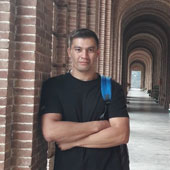
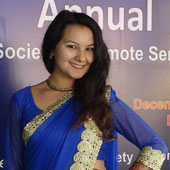
I want to convey my big big thanks to every person who came in touch during this 9 months course.It was truly a great opportunity for being part of this course and will definitely remember 9 months stay for rest of our life.
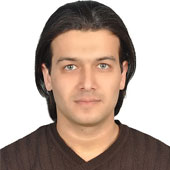
Thanks to CSSTEAP and IIRS for giving me this opportunity to undertake the 9 months PG Course in RS & GIS. I have been benefitted by the course.
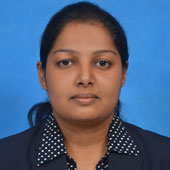
I enjoyed the stay in CSSTEAP, India. Thanks for the wonderful opportunity. This was my first experience in remote sensing technology applications and it was very enriching experience. Thanks to all the faculties.

This course is very helpful and interactive for us and, we learned so many good things. It is like out of box experience for us learning new things. I would like thanks all CSSTEAP, IIRS staffs especially Director. I learned so many new things about RS and GIS it will be very helpful in future and I will share with my colleagues. We stayed here 9 month and it was good experience, enjoyed with foods, travelling also was pretty good.
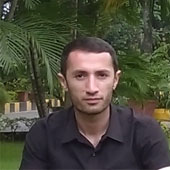
I am grateful CSSTEAP for providing us with very useful course which equipped us with intensive knowledge, advanced techniques and skills of RS and GIS application for various disciplines. The course completely benefit us and our country.
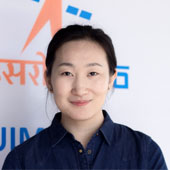
I would like to say thank you for CSSTEAP as well as IIRS for who gave me opportunity to undertake this RS & GIS PG diploma course. I am so happy to get a lot of experience in IIRS. Thanks to all faculties.
